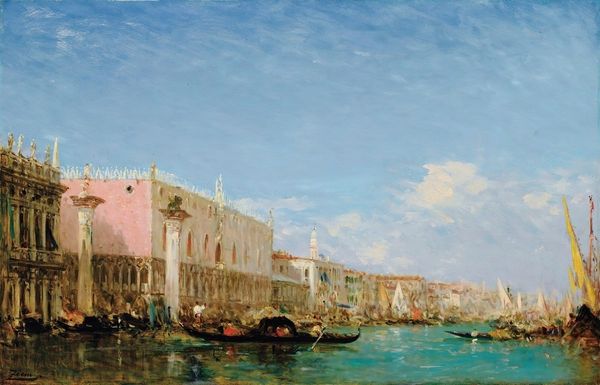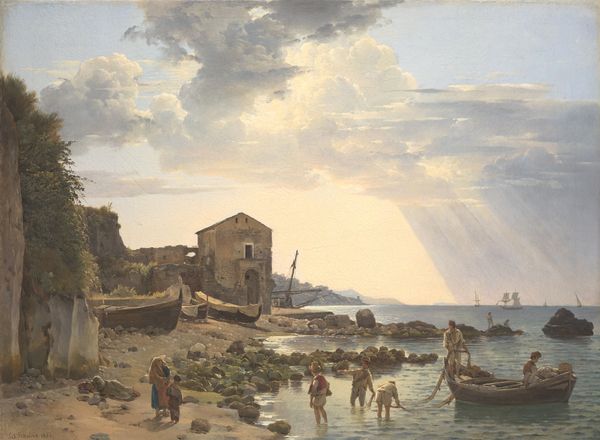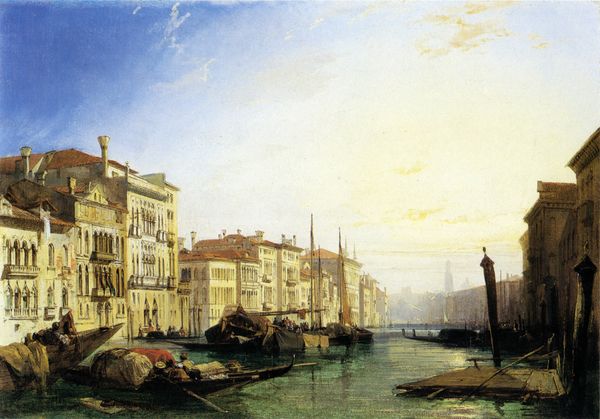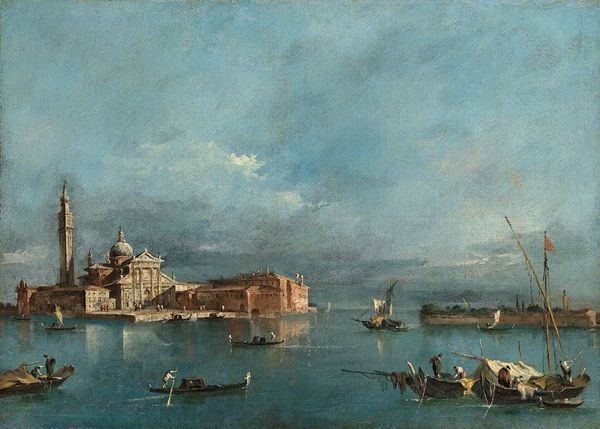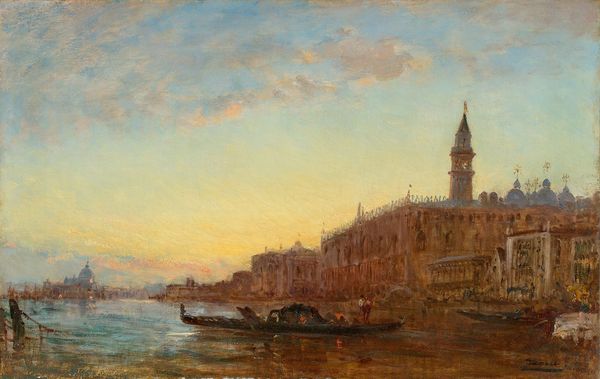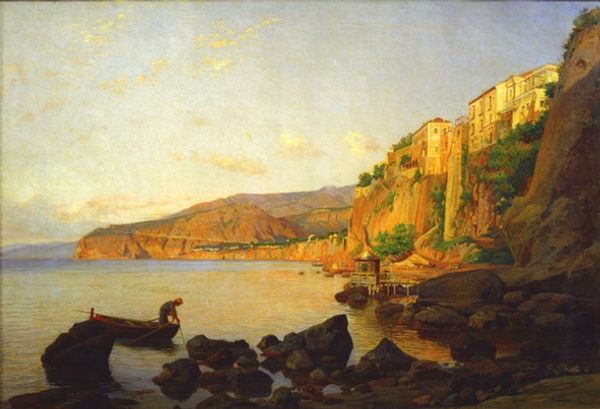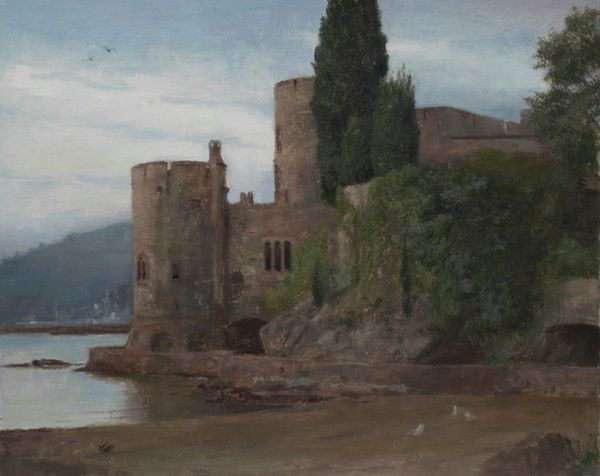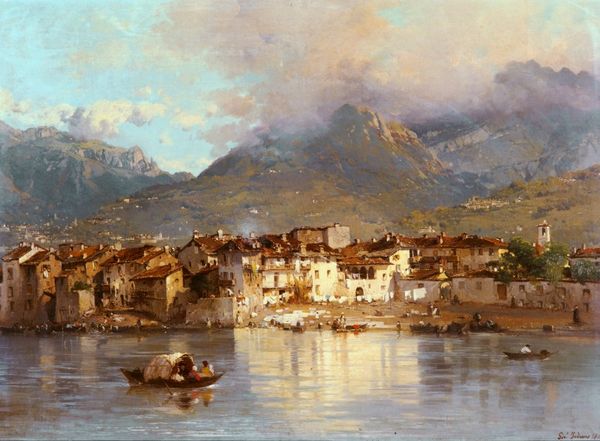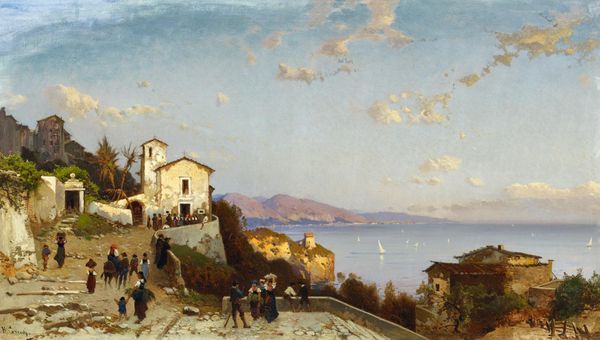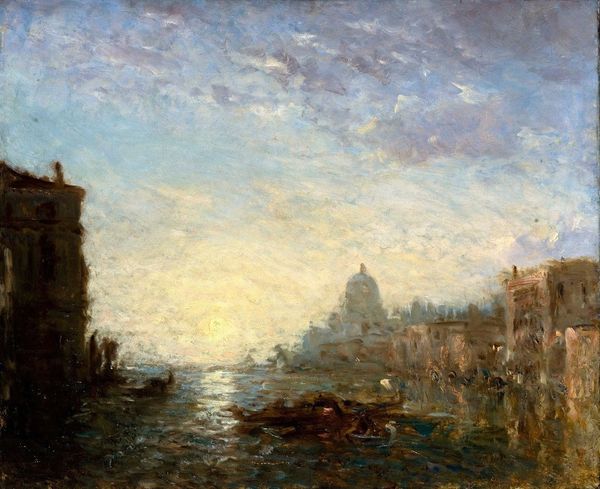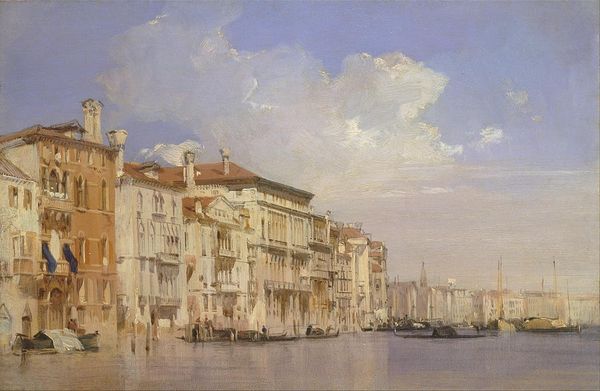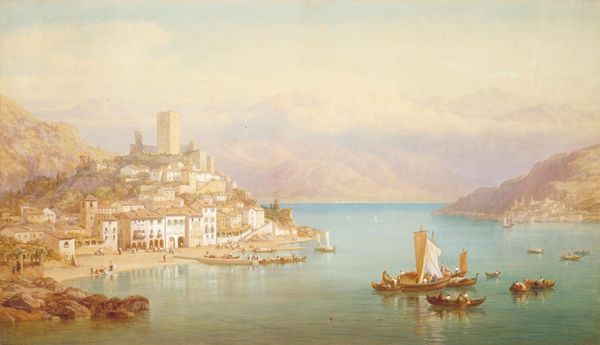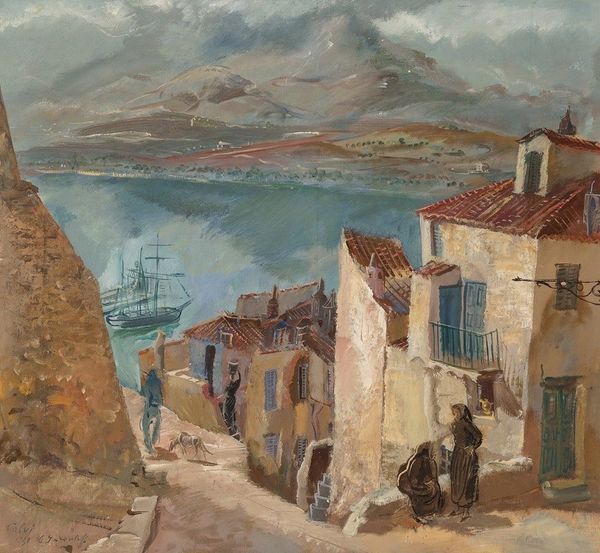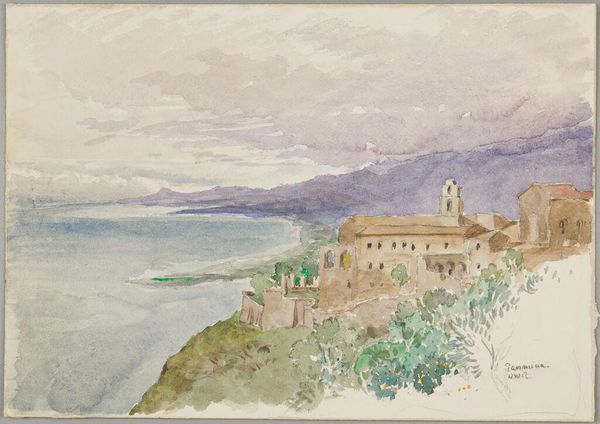
plein-air, oil-paint
#
plein-air
#
oil-paint
#
landscape
#
oil painting
#
romanticism
#
cityscape
Copyright: Public Domain: Artvee
Editor: This is Johan Christian Dahl's "The Barracks at Pizzofalcone, Naples," painted around 1820. It’s an oil painting and gives a subdued feeling with those soft greys and browns. The building dominates the scene. I’m curious, what do you see in this piece? Curator: It's a fascinating look at 19th-century Naples. Focusing on the 'barracks' themselves - the raw materials used to construct such a massive, imposing building perched precariously on the cliffs, who quarried that stone, who built that structure? The paint itself mimics the worn surfaces, doesn't it? How does Dahl represent the process of material extraction and construction within this idealized landscape? Editor: So, you’re looking at it less for the picturesque view and more for what it says about how that view *came* to be, the work involved? Curator: Exactly! The 'plein-air' designation tells us Dahl observed the effects of light, of course. But it also suggests a certain directness of engagement. A labor! Was it just the Neapolitan sunsets he was enamored by or maybe the materials, the city itself in full form as a product? Editor: That perspective makes the inclusion of the ship interesting too. I mean, were those barracks built to *facilitate* shipping, the movement of goods? It connects to something bigger than just a pretty building, doesn’t it? Curator: Precisely. Consider the economics intertwined with such Romantic scenes: trade routes, naval power, even the sourcing of the oil paints themselves. The barracks become less a static object and more a point of convergence of labour, resources, and global commerce. Editor: Wow. I never would've considered that! It really does shift the entire feeling of the painting. I’ll never look at landscapes the same way! Curator: Indeed, thinking about how it was made forces us to rethink its message. It all boils down to where our attention rests!
Comments
No comments
Be the first to comment and join the conversation on the ultimate creative platform.
